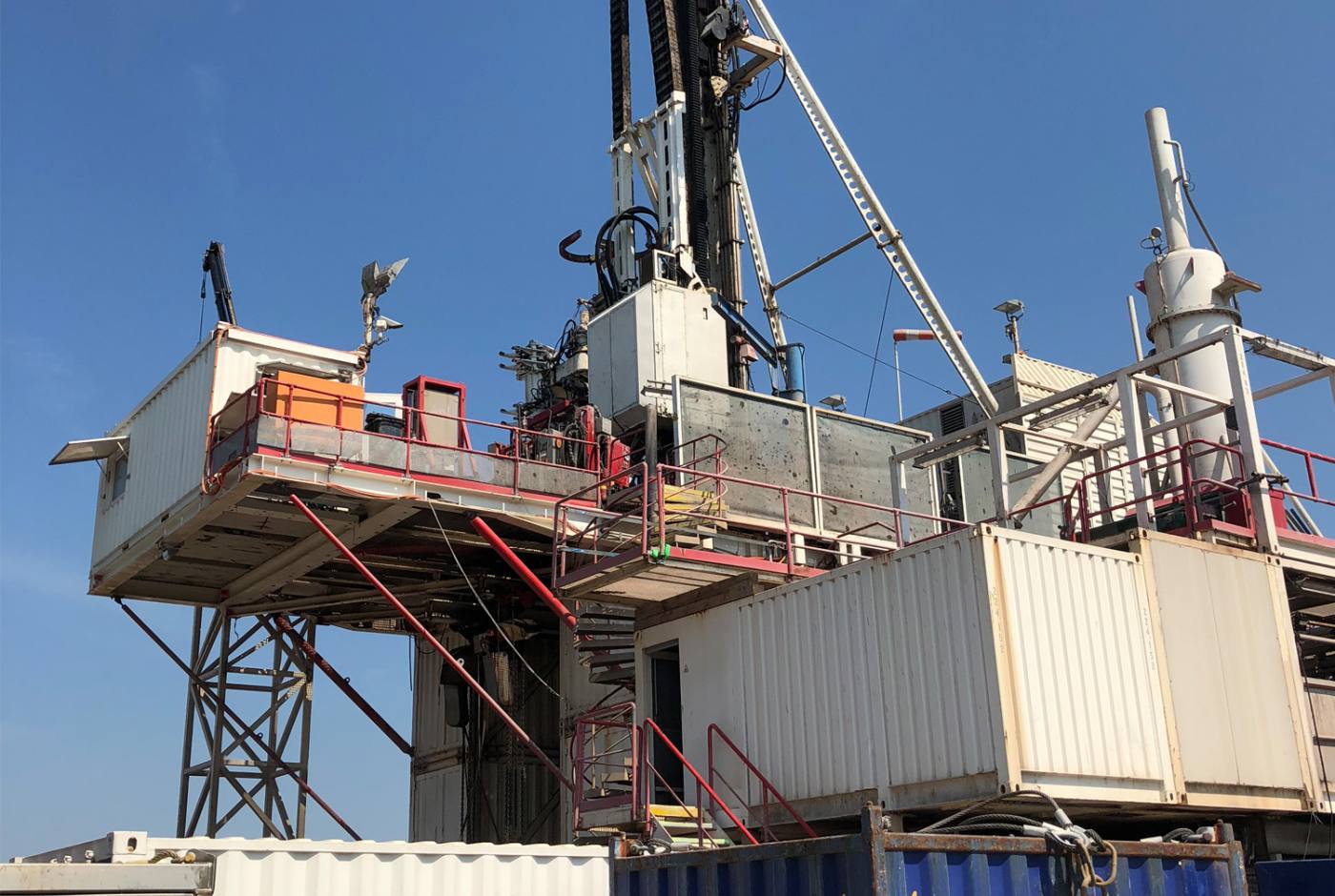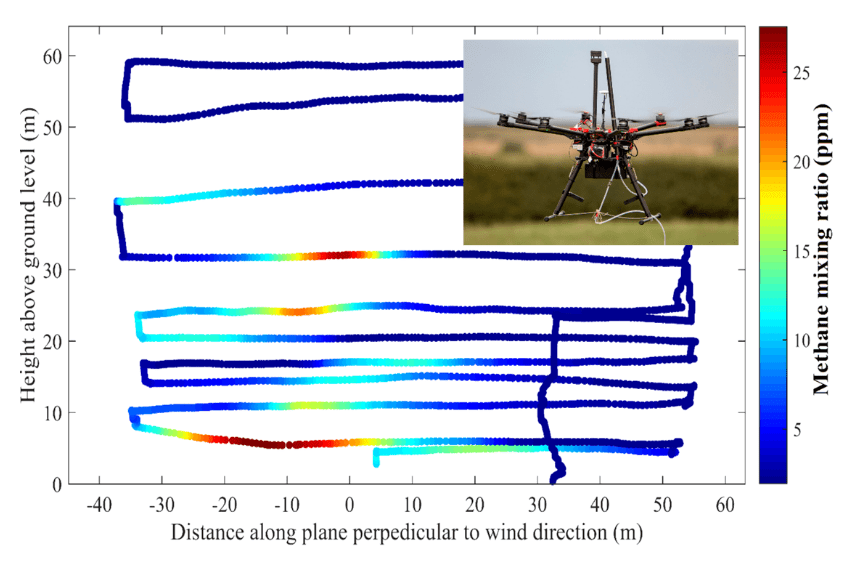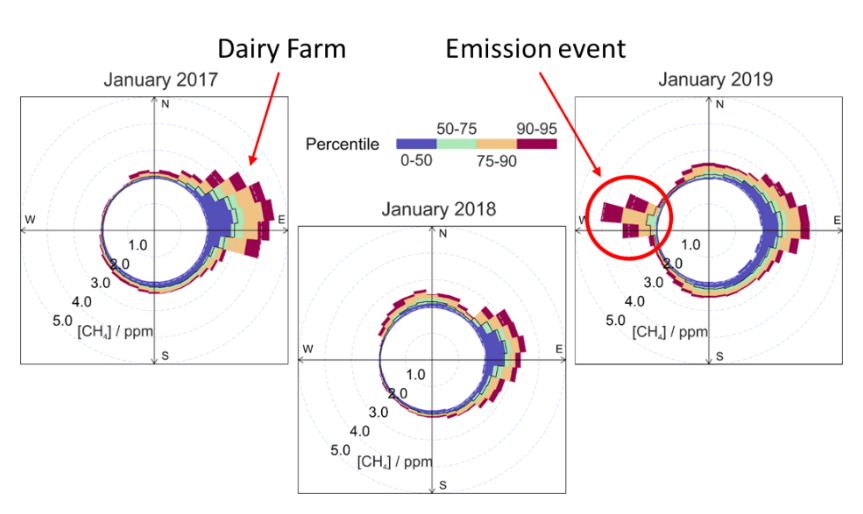Methane release from UK shale gas site equivalent to 142 trans-Atlantic flights
Operations at the Preston New Road shale gas site led to an atmospheric venting of 4.2 tonnes of methane gas that was detected at a nearby station installed by researchers from the University of Manchester as part of a project led by the British Geological Survey (BGS).
28/10/2020 By BGS Press
Elevated methane (CH4) concentrations (in air) were measured at an atmospheric monitoring station near the Preston New Road (PNR) shale gas site over a one week period in January 2019.
Analysis showed this to be a result of the release of non-combusted methane from the flare stack at the shale gas site following operations to clean out the 2.3 km deep shale gas well.
During the emission event, UAVs (unmanned aerial vehicles) were deployed to map the vertical and horizontal extent of the methane plume.

Methane concentrations measured during a UAV flight downwind of the PNR shale gas site with a flight path perpendicular to the gas plume. © Manchester University / BGS
Identification of the methane emissions from the site was made by comparing the data with two years of baseline measurements, taking into account variability due to season and wind direction. The baseline monitoring was carried out by the University of Manchester as part of a BGS-led environmental monitoring project and supported by the Department of Business Energy & Industrial Strategy (BEIS).

Pollution rose diagrams showing methane concentrations in air measured at the monitoring site in January 2017, 2018 and 2019. Measurements are shown broken down by wind direction. January 2017 and 2018 represents the baseline (before shale gas operations began) and clearly show the influence of emissions from a dairy farm to the east of the monitoring station. In January 2019 the emission event from the shale gas site to the west is clear. © Manchester University / BGS
Three different methods were used to estimate the methane release rate. Peak release rate was estimated to be approximately 70 g s-1, with an average over the whole week of 16 g s-1.
The estimated total mass of methane emitted during the event was 4.2 (± 1.4) tonnes. In terms of greenhouse warming potential, this is equivalent to 143 tonnes CO2 using the default 100-year time horizon conversion factor (GWP100), the annual electricity demand of 166 UK homes, or 142 London-New York flights.
The research found that independent estimates of methane emissions during the early stages of hydrocarbon development are not routinely made, nor are they generally understood for well development, well-unloading and well-stimulation activities.
This may mean that greenhouse gas emissions are currently under-represented in lifecycle analysis of the overall carbon footprint of unconventional gas as an energy source. It will be important to include such processes in future greenhouse gas evaluations.
Professor Rob Ward, Policy Director at BGS said:
“This study demonstrates the importance of establishing effective monitoring at oil and gas sites to establish the baseline and then enable detection and quantification of any emissions that might arise. Not only is this important for managing what might be a hazardous situation, it is also important for properly assessing greenhouse gas emissions.”
Professor Grant Allen, The University of Manchester, said:
“Our work shows that atmospheric monitoring of shale gas activity is crucial to meaningfully assess any role that the industry may have in the UK’s future energy mix and whether it can (or cannot) be consistent with the UK’s stated aim of achieving net-zero carbon emissions by 2015.
“This work informs that debate and provides new data on emissions from well-clearing activities that must be captured in industry life cycle assessments, and should be used to inform regulatory oversight and industrial practices surrounding venting activities such as the event quantified here. Such emissions should be avoided wherever possible.”
Dr Jacob Shaw, from the University of Manchester and lead author of the paper said:
“The dangerous consequences of global warming are now beginning to become evident. Routine monitoring and scrutiny of the fossil fuel industry is crucial if we are to curb impacts, and also if we are to meet the UK Government’s Net Zero targets.”
The work was supported by a grant from the Natural Environment Research Council as part of the NERC/ESRC Unconventional Hydrocarbons Research Programme, and grant funding from the Department for Business, Energy and Industrial Strategy (BEIS)
The research is published in the Journal of the Air & Waste Management Association.



